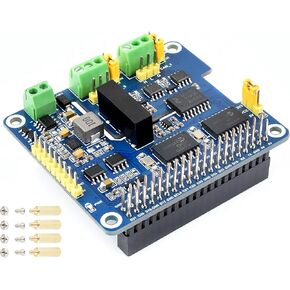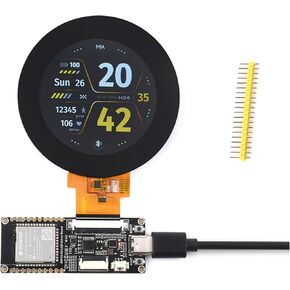- Shopping, made easy.
- /
- Get the app!
Features
Achieves bidirectional data transmission between TTL UART and CAN interfaces
Built in TTL and CAN conversion protocol algorithm, enabling data conversion communication between TTL and CAN via simple configuration
Supports 3.3V operating voltage on TTL interface, supports both CAN 2.0A (standard frame) and CAN 2.0B (extended frame) on CAN interface
Supports 14 sets of configurable filters, can only receive CAN bus data in specific range and type via configuration
Supports 4 operating modes: transparent conversion, transparent with identifiers conversion, format conversion, and Modbus RTU protocol conversion
Supports offline detection and automatic recovery functions
UART communication baudrate: 1200bps~460800bps
CAN communication baudrate: 10kbps~1000kbps, configurable
Up to 1000 frames CAN buffer for buffering transmission data to prevent data loss
Supports high-speed conversion, the CAN transmission speed can reach up to 1270 extended frames per second with the UART at 115200bps and CAN at 250kbps (close to the theoretical max value of 1309), and can exceed 5000 extended frames per second with the UART at 460800bps and CAN at 1000kbps
Supports device firmware upgrade via TTL, more convenient for firmware update and function customization
Comes with Online Tutorial and Online Development Resource, Please check: n9.cl/nthbx
Specifications
CAN port
supports CAN2.0A (standard frame) and CAN 2.0B (extended frame)
with ESD protection and anti-surge protection, excellent EMC performance
baudrate: 10kbps~1000kbps
TTL port
3.3V operating voltage
baudrate: 1200bps~460800bps
Communication indicators : onboard working indicator, reserved RUN, COM, and CAN indicator signal pins
Other: onboard reset/restore to factory setting pin
Working temperature : -40~85℃
Humidity range : 5~95% relative humidity
 RP2040 MCU Board Onboard 1.28inch Round Touch LCD with CNC Metal Case, 240×240 Pixels 65K IPS LCD Display, Accelerometer and Gyroscope Sensor, Type-C Connector 6 × GPIO Pin via SH1.0 Connector
KWD 15
RP2040 MCU Board Onboard 1.28inch Round Touch LCD with CNC Metal Case, 240×240 Pixels 65K IPS LCD Display, Accelerometer and Gyroscope Sensor, Type-C Connector 6 × GPIO Pin via SH1.0 Connector
KWD 15
 Aluminium Alloy Case for Raspberry Pi 5, Pi5 Case with Dual Cooling Fans and 4PCS Heatsink Tape for Raspberry Pi 5 4GB/8GB (Raspberry Pi NOT Included)
KWD 6
Aluminium Alloy Case for Raspberry Pi 5, Pi5 Case with Dual Cooling Fans and 4PCS Heatsink Tape for Raspberry Pi 5 4GB/8GB (Raspberry Pi NOT Included)
KWD 6
 2-CH CAN HAT+ 2-Channel Isolated CAN Bus Expansion HAT for Raspberry Pi 5/4B/3B+/3B/2B/Zero 2W/Zero W/Zero WH,MCP2515 and SN65HVD230 Dual Chips HAT+ Standard Support Stacking with Other Modules
KWD 14
2-CH CAN HAT+ 2-Channel Isolated CAN Bus Expansion HAT for Raspberry Pi 5/4B/3B+/3B/2B/Zero 2W/Zero W/Zero WH,MCP2515 and SN65HVD230 Dual Chips HAT+ Standard Support Stacking with Other Modules
KWD 14
 ESP32-S3 RGB LCD Driver Board with 2.1inch TFT Round Display 480×480 Pixels, ESP32-S3-WROOM-1-N8R8 Module 32-bit 240MHz LX7 Dual-Core Processor, 8MB PSRAM and Flash, Support W-i-F-i & Blue Too-th
KWD 16
ESP32-S3 RGB LCD Driver Board with 2.1inch TFT Round Display 480×480 Pixels, ESP32-S3-WROOM-1-N8R8 Module 32-bit 240MHz LX7 Dual-Core Processor, 8MB PSRAM and Flash, Support W-i-F-i & Blue Too-th
KWD 16